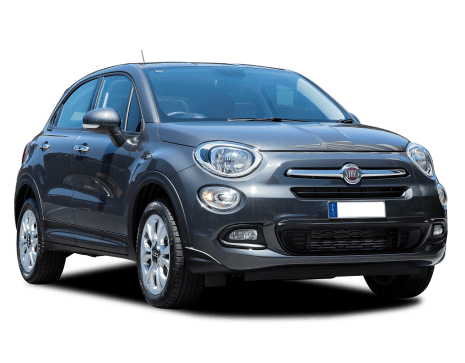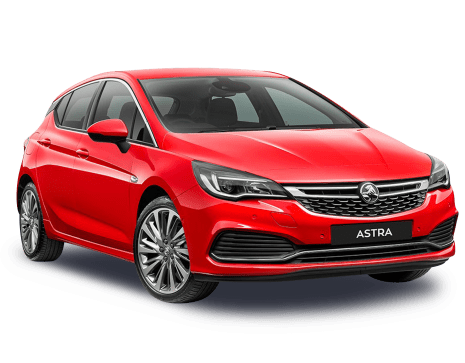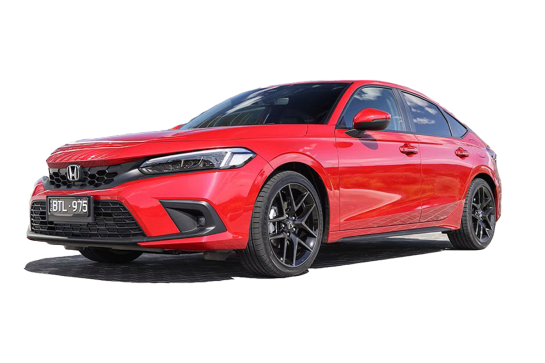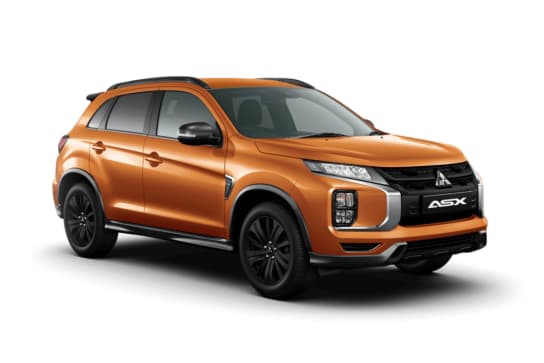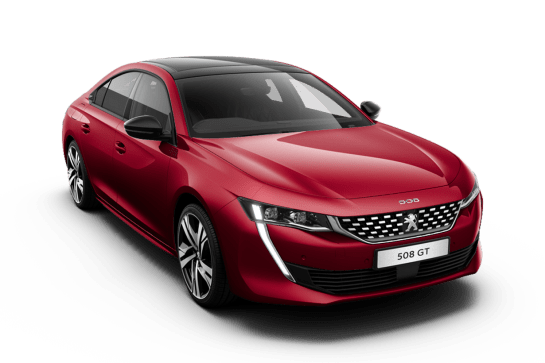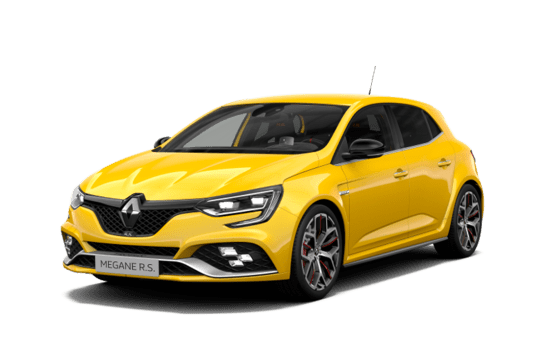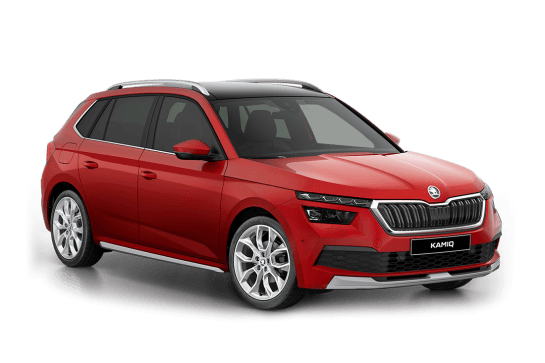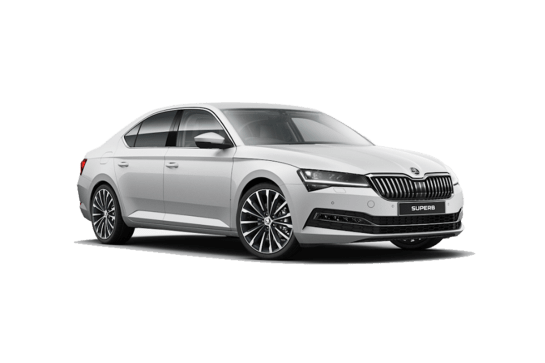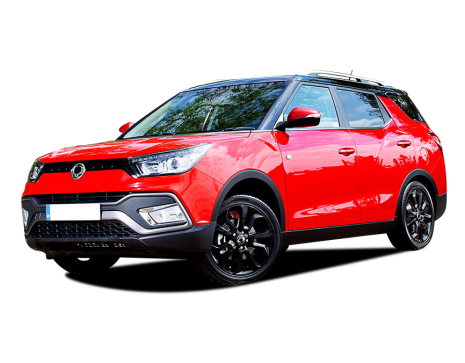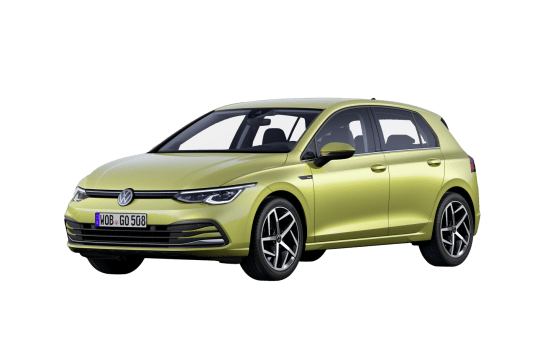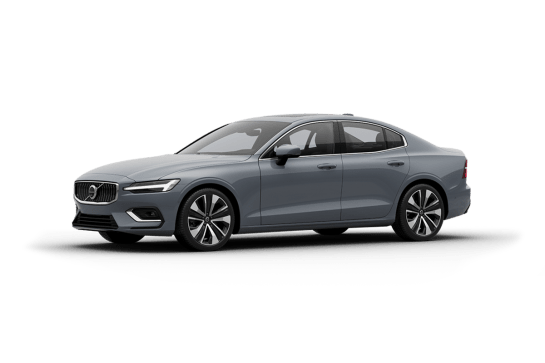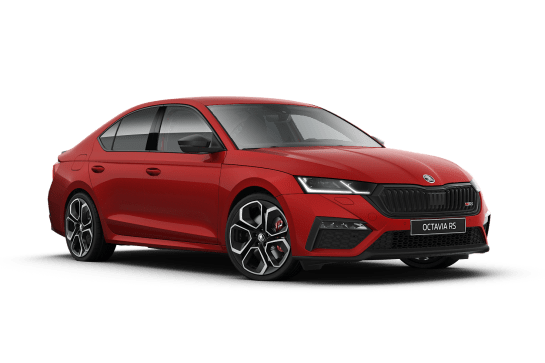
Skoda Octavia VS Peugeot 2008
Skoda Octavia
Likes
- Value
- Practicality
- Safety
Dislikes
- Floaty ‘Comfort’ mode
- Drinks premium unleaded
- No 12V outlet in cabin
Peugeot 2008
Likes
- Good looks
- Charming engine
- Affordable servicing
Dislikes
- Stiff suspension
- High price
- Driver display hard to see
Summary
Skoda Octavia
Where were you in the year 2000? Cowering in a dark corner, hoping the Y2K bug wouldn’t wipe out civilisation as we knew it? Or, confidently on the front foot, shopping for a new car to transport you and your family safely into the next millennium?
If it was the latter, the most popular options back then were hatchbacks, sedans and wagons. The Ford Falcon, Holden Commodore, Mitsubishi Magna and Toyota Camry were at the height of their powers and the term ‘SUV’ was largely confined to North America, describing off-road outliers like Jeeps and Range Rovers.
Brands from Mazda to Mercedes-Benz, Peugeot, Volvo and heaps of others all offered family-friendly wagons alongside their sedan counterparts.
Read more about
- Segment-bending Euro rival to Kia EV5, Xpeng G6, and Tesla Model Y takes shape ahead of Australian arrival in 2025
- Your next family SUV? Mazda CX-80, Kia Sorento and Hyundai Santa Fe-rivalling 2025 Skoda Kodiaq standard features revealed
- Why so many car brands lost sales in Australia during 2024 including Tesla, MG, Ram and Jeep
Fast forward a quarter of a century and we’re in a world of SUVs and utes, with the traditional ‘station wagon’ almost consigned to history. But Skoda is keeping the wagon dream alive with its mid-size Octavia sedan (liftback) and wagon.
And the subject of this review is the just-arrived, 2025 model year iteration of the flagship Octavia RS, designed to combine functional pragmatism with smile-inducing performance. Let’s check it out.
| Safety rating | |
|---|---|
| Engine Type | 2.0L turbo |
| Fuel Type | — |
| Fuel Efficiency | 7L/100km |
| Seating | 5 seats |
Peugeot 2008
Looks are subjective but Peugeot’s updated 2008 small SUV is good looking from every angle.
The update brings a raft of design tweaks and some tech upgrades, but mechanically there isn’t anything new.
It’s not a cheap car and its diminutive size might scare off some buyers who can cross-shop cheaper and more value focused alternatives from mainstream Japanese and Korean brands.
Read more about
- 2025 Peugeot E-3008 electric car Australian launch and timing confirmed: New-generation mid-size EV SUV set to battle Tesla Model Y, Hyundai Ioniq 5, Kia Niro EV and Renault Megane E-Tech
- 2024 Peugeot e-208: Nissan Leaf, GWM Ora, and MG4 rival from France looks to get two battery sizes, but will it be more competitively priced?
- 2024 Peugeot 408 GT Fastback pricing and specification confirmed: Mid-size hybrid coupe crossover aims up at Audi Q5, Lexus NX and Volvo XC60
We are driving the range-topping 2008 GT variant to find out if it’s more than just a pretty face.
| Safety rating | |
|---|---|
| Engine Type | 1.2L turbo |
| Fuel Type | Premium Unleaded Petrol |
| Fuel Efficiency | 6.5L/100km |
| Seating | 5 seats |
Verdict
Skoda Octavia8.3/10
While other brands may have a higher profile, the quality of this Octavia RS proves Skoda deserves a greater share of the limelight. If you’re thinking about a primo mid-size sedan, or wagon, or even a medium SUV, this car combines satisfying performance with low-to-the-ground dynamics, immense practicality, top-shelf safety and solid value-for-money. It’s nicely put together using quality materials and the ownership package is class competitive. Do yourself a favour and add it to your new-car shopping list.
Note: CarsGuide attended this event as a guest of the manufacturer, with travel, accommodation and meals provided.
Peugeot 20087.2/10
The Peugeot 2008 is a handsome and accomplished little SUV that’s fun to drive and has a cabin that feels a little bit special.
In reality the 2008 is too expensive and isn’t as practical as most of the mainstream compact SUVs.
This is the car you buy with your heart, not with your head.
Design
Skoda Octavia
The current Octavia complies with Skoda’s sharp and angular approach to exterior design, with cool, jagged LED headlight clusters sitting either side of a blacked-out octagonal grille.
A brand signature is the bonnet shutting low and flush over the front guards to create a broad hood panel with longitudinal character lines running down its length. Similar creases flow confidently along the car’s flanks with 19-inch alloys filling the wheel wells nicely.
A smoothly tapering turret ends with a steeply raked rear screen on the sedan and wagon with angular LED tail-lights following a similar pattern to the headlights.
As well as the black grille, car-spotters should look out for the RS’s black finish on the window frame surrounds, roof rails (wagon only) wing mirrors and tailpipes as well as red brake calipers and RS sports bumpers front and rear.
Always a subjective call, but I for one think this car looks distinctive and contemporary while avoiding unnecessary flashiness.
Inside, the treatment is relatively reserved, with a grey through to black colour palette and high-quality materials, including soft-touch surfaces around the dash, doors and console, as well as ‘mouse fur’ and faux carbon sections on the upper dash.
The sports front seats are trimmed in a combination of synthetic leather and synthetic suede with quilted panels in the centre of the cushion and backrest. They feel as good as they look and are easy to get in and out of. Red contrast stitching throughout the interior dials up the racy tone.
A sizeable central media touchscreen sits proud of the dash with the VW Group’s ‘Virtual Cockpit’ ahead of the driver configurable through multiple set-ups. And a smattering of dark chrome and brushed metal highlights (including on the pedals) finish off a beautifully executed interior.
Peugeot 2008
The Peugeot 2008 is a smooth operator with head-turning French flair, but the devil is in the detail.
It’s not just the 2008’s well proportioned dimensions or the healthy dollop of exterior black highlights that catch your eye, but Peugeot has added a range of design cues to symbolise the Lion on its badge.
The tail-lights have a 3D effect that make them look like cat’s claws and the daytime running lights on the front resemble a scratch mark. These pair perfectly with the lion head crest on the grille.
Look deeper and you notice the attention to detail.
The 2008's redesigned front grille's slates are colour matched to the car's body colour.
Dual exhaust pipes are finished in chrome, giving the impression of performance even if the car doesn’t deliver on it.
The GT variant gets a two-tone paint job with a black roof contrasting with the body's colour.
Inside there are plenty of high quality finishes. The centre console is festooned in gloss black and there is a lovely carbon-effect textured insert on the dash and doors.
Some hard plastics below eye-level and on touch points such as where your knee might rub are less impressive. The rear seat loses some of the lustre of the front pew with tough plastics covering the back of the front seats and most of the doors.
Practicality
Skoda Octavia
Practicality is an area where Skoda comes into its own. At every turn the brand’s design and engineering teams have obviously kept day-to-day usability in mind with thoughtful tweaks to make life easier.
Some have become low-key famous like an umbrella slotted into the driver’s door (Rolls-Royce-style) and a small lidded rubbish bin in the driver’s door pocket.
But over and above that, the Octavia’s efficient packaging means in a car measuring just on 4.7m long there’s heaps of room up front for the driver and passenger, with lots of handy storage options.
Aside from generous door pockets there’s a box between the seats with a padded lid (adjustable for height and length when in use as an armrest), a 15W wireless charging pad (with ventilation from below to keep devices cool), a big glove box (with pen holder), multiple cupholders, a cupholder insert able to hold a phone and/or some coins, numerous oddments trays and a sunglasses compartment overhead (not fitted with optional panoramic sunroof).
And in the back, sitting behind the driver’s seat, set for my 183cm height, there’s tons of leg and headroom with more practical design thinking on display.
For example, map pockets on the back of the front seats have a phone-sized slot stitched into them. There are pull up shades for each window, big bins in the doors with plenty of room for bottles and more, a pull-down centre armrest with fold-out cupholders (plus some oddments space), adjustable climate control vents plus a box on the floor for extra bottles and ‘stuff’ (removable if you need foot room for a centre passenger).
Power and connectivity runs to five USB-C sockets (two front, two rear and one near the rear-view mirror for dashcam duty) plus a 12-volt outlet in the boot.
Speaking of which, head to the boot and the ‘plenty of room’ theme continues. With the 60/40 split folding rear seat upright there’s 600 litres of space in the sedan and 640 litres in the wagon. Lower the backrest and that number increases to 1555 and 1700 litres, respectively. That’s plenty, and more than the Mazda6.
The sedan and wagon feature anchor points for securing loose loads, extra storage bays behind the rear wheel wells, there’s a ski-port door behind the rear armrest, load divider rails in the sedan, remote release handles for the rear seat, bag hooks, a luggage net… the lot.
The powered tailgate includes hands-free opening, there’s a space-saver spare under the floor and towing capacity for a braked trailer is 1600kg (750kg unbraked).
Peugeot 2008
Step inside and there is no hiding the 2008’s diminutive proportions.
It’s 4300mm long, 1815mm wide and 1550mm high, which puts it closer in size to the mini Mazda CX-3 than the larger CX-30 it is more aligned with price-wise.
This all adds up to a snug fit in whichever row you sit.
There are a couple of cupholders in the centre console - a smaller one for a standard takeaway coffee and a larger one for drink bottles.
Slight storage bins in the door can hold a regular drink bottle but there isn’t much room for much else.
The wireless device charger is hidden away behind a compartment below the central screen that opens with a push and there are two USB-C ports up front and the rear seats score a USB-C and A connection.
Rear seat passengers do without a dedicated aircon vent, unfortunately.
There is an issue with Peugeot’s i-Cockpit steering wheel and digital driver display, too.
If you like to sit low the chances are the steering wheel will cut off your view of the bottom part of the display. If you prefer to have the seat jacked up, you’ll have better vision of the readouts.
There are piano key-like physical controls for simple climate functions such as the de-mister and auto climate settings. More complex functions are done via the 10-inch central multimedia screen.
The boot is a decent size at 434L and can easily handle a weekly grocery shop or a few overnight bags.
There is only a space saver spare wheel, but this car is aimed at city driving where it is easier to source a replacement tyre.
Price and features
Skoda Octavia
Priced at $58,490 for the sedan and $59,990 for the wagon, both before on-road costs, the Octavia RS has one competitor that meets the mid-size sedan and wagon criteria with cost-of-entry somewhere in the same ballpark. And that’s the current Mazda6 20th Anniversary Edition.
Pitched at $54,385, before on-road costs, for the sedan and $55,685 (BOC) for the wagon, the Mazda goes toe-to-toe with the Skoda on size, equipment and performance, although the ‘6’ leans more towards a premium rather than outright performance vibe. And the Mazda has recenetly been discontinued in Australia.
The Accord VTi-LX Hybrid ($59,900, drive-away) puts Honda in the sedan mix and if you’re considering a pure electric medium sedan, the BYD Seal Premium comes in at $58,798, before on-roads while the Tesla Model 3 Single Motor RWD sits at $54,900.
So, aside from the safety and performance tech, covered a little later, what can you bank on in terms of included features for a price tag giving $60K a serious nudge?
The answer is… heaps. Standard equipment on the Octavia RS includes three-zone climate control, adaptive cruise control, a 13-inch multimedia touchscreen, sat nav, 12-speaker Canton audio (with digital radio), a 10-inch configurable digital instrument display, a head-up display, sports front seats (heated with six-way power adjust, memory and massage function), heated rear (outboard) seats, a power tailgate (with hands-free opening), keyless entry and start and rain-sensing wipers.
There’s also ‘Intelligent Park Assist’, LED external lighting (including matrix LED headlights), 19-inch alloy rims, heated and power-folding exterior mirrors (with memory function), synthetic leather and synthetic suede trim, a flat-bottom leather-trimmed steering wheel, alloy finish pedals and rear privacy glass as well as wireless Android Auto and Apple CarPlay.
Worth noting solid, metallic and pearlescent paint options (seven colours) are included as standard, with the single premium metallic ‘Velvet Red’ colour adding $770.
That’s as much fruit as you should expect in this part of the market and a bit more.
Peugeot 2008
The 2008 range kicks off at $39,990, before on-road costs, for the base Allure grade and rises to $44,490 for the fully loaded GT variant.
That’s a lot of money for a small SUV, especially considering the Skoda Kamiq range starts at $32,990, you can get Nissan’s Qashqai from $33,890 and a Mazda CX-30 for $33,140.
There is a lot to like about the 2008’s standard equipment list, though.
Flash looking 17-inch alloy wheels are complemented by adaptive LED headlights that control individual LEDs to brighten the road without dazzling oncoming vehicles. The headlights will automatically switch on in low light situations and stay on for a short period of time after you exit the vehicle to make it easier to find your way to the door at night.
A 10-inch multimedia screen is compatible with wireless Apple CarPlay and Android Auto, and a wireless device charger completes the cord-free ecosystem.
Peugeot’s 'i-Cockpit' brings a 10-inch driver display with 3D readouts paired with a small steering wheel.
GT buyers can expect eight colour ambient lighting, a six-speaker stereo, four USB charging ports, in-built sat nav and brushed aluminium foot pedals.
Well bolstered seats are heated up front and wrapped in synthetic suede and leather upholstery with contrast green stitching. The driver’s seat is power adjustable and has a massage function but the front seat passenger will need to move the seat themselves.
There are rain-sensing wipers, roof rails, power folding and heated side mirrors and a space saver spare wheel.
It’s a solid list of equipment but is missing some features you’ll find on similarly priced rivals such as a head-up display.
Under the bonnet
Skoda Octavia
The Octavia RS is designated ‘195TSI’ which relates to the power output of its 2.0-litre, four-cylinder, turbo-petrol engine driving the front wheels through a seven-speed dual-clutch auto transmission.
It’s a fourth-generation evolution of the Volkswagen Group’s long-serving ‘EA888’ engine series, an iron block/alloy head unit featuring direct-injection and variable valve timing to produce (you guessed it) 195kW and 370Nm.
Peugeot 2008
Lurking beneath the bonnet is a little three-cylinder 1.2-litre turbo-petrol engine that makes 96kW and 230Nm. That’s a decent amount of grunt from the little unit, but again you can get more oomph for less from mainstream rivals.
It is paired to an eight-speed automatic transmission that drives the front wheels.
There is no hybrid help, either.
Efficiency
Skoda Octavia
The Octavia RS’s official fuel consumption figure on the combined (urban/extra-urban) cycle is 7.0L/100km, the 2.0-litre turbo-petrol engine emitting 159g/km of CO2 in the process (wagon 160g/km).
A start/stop function is standard and on a launch drive program through rural Victoria, covering several hundred kilometres’ worth of urban, B-road and freeway running we saw a (dash-indicated) figure of 6.9L/100km. With a 50-litre fuel tank on board, the RS’s theoretical range is around 715km.
In the city, expect an average in the high 8.0 range, which isn’t out of order for a 1.5-tonne sedan (1.6-tonne wagon).
Peugeot 2008
Stiff emissions regulations in Europe mean these little turbocharged petrol engines have a fair bit of self control on the drink.
Peugeot claims the 2008 uses 5.4L/100km on the combined cycle. We used slightly more than this but spent most of the time in the cut and thrust of city traffic where cars use more fuel.
You’ll need to budget for pricier premium unleaded petrol, too.
Driving
Skoda Octavia
Skoda claims 0-100km/h acceleration in 6.4 seconds for the Octavia RS sedan and 6.5sec for the wagon and it feels willing with solid mid-range punch available.
Peak power comes on stream up high (5250-6500rpm) but maximum pulling power is on tap from 1600-4500rpm, which is spot-on for urban running, easy highway cruising and safe overtaking.
A sports exhaust dials up a rorty note when pushing on and the seven-speed dual-clutch transmission proved quick and smooth on a launch drive covering mainly rural B-roads and some freeway sections.
Steering wheel-mounted paddles add extra involvement when you’re in the mood to push through some twisty stuff and select ratios manually.
Speaking of corners, suspension is by struts at the front and a multi-link arrangement (unique to the RS grade) at the rear, with an electronically controlled limited slip differential and ‘Dynamic Chassis Control’ standard. Ride height is 15mm lower than the standard Octavia.
DCC is Skoda code for an adaptive damper set-up and the system offers a ‘Comfort’ mode to help manage bumps, although it adds an air of floatiness on the open road. As the name implies, ‘Sport’ buttons everything down and road imperfections immediately make their presence felt. ‘Normal’ is surprisingly comfortable without upsetting the car’s balance and overall compliance.
Standard rubber is 225/40 Bridgestone Potenza S005, providing a good grip vs comfort compromise, and the electrically assisted progressive rate rack and pinion steering is accurate, providing good road feel without being too sharp or ‘pointy’. Braking is by ventilated discs all around and the pedal is strong and progressive.
Under the heading of miscellaneous observations, engine, wind and road noise are modest, the grippy sports front seats remained comfortable over several hours behind the wheel, plus a relatively tight 10.4m turning circle and standard 360-degree camera view system make parking easy.
Peugeot 2008
On the road the 2008 is a bit temperamental.
Most European cars are fitted with stiffer suspension than the cosseting springs found in Japanese machines.
This means you’ll feel bumps and road imperfections through your seat more than other SUVs. It has particular problems ironing out consistent smaller bumps, which can unsettle it and lead the 2008 to skip across them.
The counterbalance to that is a more dynamic drive experience, with the 2008 exerting excellent body control through the bends as it is held in line by the stiffer set-up.
Pair this with sharp, direct and well-weighted steering and it's a fun little SUV to take on a twisting country back road.
Three cylinders might not sound like a lot, but in the real world this is all the 2008 needs.
Its 96kW and 230Nm won’t set the world on fire but the torque is accessed from just 1750rpm, which endows the 2008 with some punch off the mark and it feels zippy when navigating the daily commute.
Don’t confuse that for outright speed, though, the 2008 completes the benchmark 0-100km/h dash in 9.3 seconds.
The transmission is fine when you are accelerating or cruising at motorway speeds, where it uses its many ratios to keep the engine humming along in its sweet spot. There are paddle shifters if you want more control.
In stop-start traffic it isn’t as an accomplished performer. It can struggle to find the right ratio and this leads to a jerky movement reminiscent of dual-clutch autos.
The cabin is well insulated with the outside world kept mostly at bay, but you’ll hear the three cylinder’s charming little rumble when you put your foot down.
Parking is a cinch thanks to its petite proportions and the 2008 has no issues navigating tight city streets or underground car parks.
Safety
Skoda Octavia
The current Skoda Octavia was given a maximum five-star ANCAP rating following assessment in 2022. High scores in the adult and child occupant protection categories focused on the stability of the car’s passenger compartment in front offset, full front, side and pole impact crash tests.
For the 2025 model year, standard active (crash-avoidance) tech now includes turn assist and advanced driver fatigue detection, which is on top of auto emergency braking (AEB) operating from 5.0-250km/h (with car and ‘vulnerable road user’ detection plus junction assist), lane keeping assist (and emergency lane keeping), rear AEB, blind-spot monitoring, rear cross-traffic alert, a reversing camera, a 360-degree camera view, tyre pressure monitoring, front and rear parking sensors and more.
If, despite all that, a crash is unavoidable the airbag count runs to 10 - dual front, front side, rear side, side curtain, front centre and driver's knee.
There are three top tether points for securing child seats across the second row with ISOFIX anchors on the two outer rear positions.
That’s an impressive safety run down, as good or better than any category competitor.
Peugeot 2008
The 2008 has a maximum five-star ANCAP safety rating, but that mark was given in 2020 and it might not get the same score if it was retested today.
It has six airbags, but misses out on a centre airbag that protects against head clashes in a side on collision.
It has a decent amount of safety equipment with auto emergency braking, lane keep assist, blind spot monitoring and adaptive cruise control.
Rear cross-traffic alert, which sounds an alarm if a car is approaching from the side as you reverse, is a notable absence.
Ownership
Skoda Octavia
The Octavia is covered by Skoda’s seven-year/unlimited kilometre warranty, which is ahead of the mainstream five-year warranty pack, although a little short of some, like MG and Mitsubishi at 10 years.
Service is recommended every 12 months/15,000km and a four-year/60,000km service pack will set you back $2000, with 12 months’ roadside assistance topped up for another year after each trip to an authorised workshop.
That $500 per service charge is a solid amount but not outrageous for a premium, especially Euro, mid-sizer. For reference the Mazda6 20th Anniversary averages $552 per service over the same period.
Peugeot 2008
Peugeot covers the 2008 with a five year/unlimited km warranty, which is the standard coverage today.
The French brand offers a range of prepaid servicing packs that’ll save you a handy amount compared to pay-as-you-go maintenance.
A five-year plan is the best value, costing $1700 for five scheduled visits every 12 months or 15,000km. That’s $638 cheaper than the pay-as-you-go servicing.


